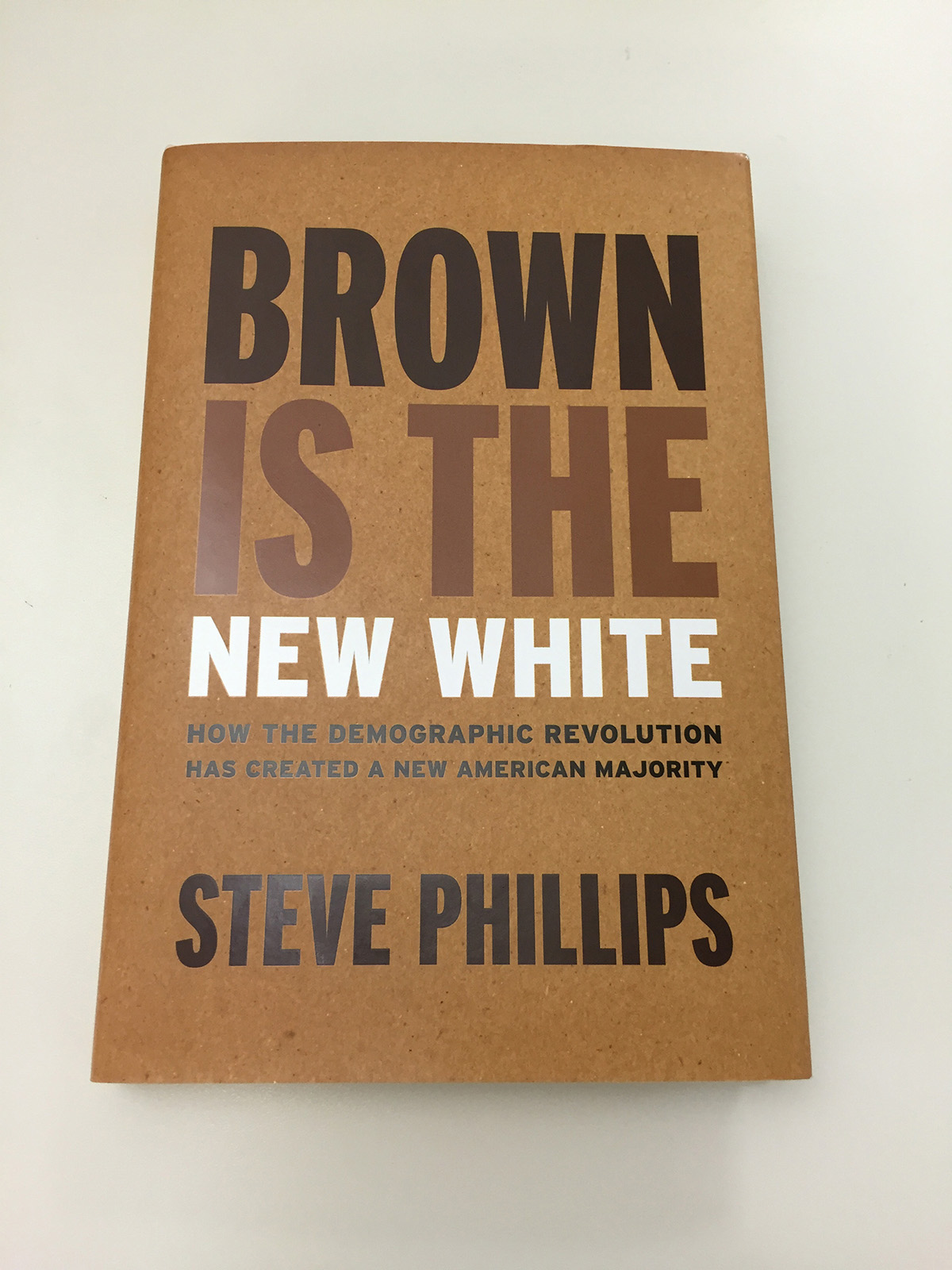Is Brown the New White?
By Janet Murguía, President and CEO, NCLR
 At a time when we’re being assaulted by new levels of hate, intolerance, and bigotry in our political campaigns, an important new book, Brown is the New White: How the Demographic Revolution Has Created a New American Majority, points the way toward a more inclusive, just, and fair society. Written by Steve Phillips, a veteran social justice activist and founder of PowerPAC+, Brown is the New White argues that a “new American majority” composed of progressive people of color and Whites is already a demographic reality. He cautions correctly, though, that this potential alliance is not yet a political reality. That would require—and is still awaiting—an affirmative effort to be mobilized and realized by increasing “cultural competence” and making wiser electoral investments.
At a time when we’re being assaulted by new levels of hate, intolerance, and bigotry in our political campaigns, an important new book, Brown is the New White: How the Demographic Revolution Has Created a New American Majority, points the way toward a more inclusive, just, and fair society. Written by Steve Phillips, a veteran social justice activist and founder of PowerPAC+, Brown is the New White argues that a “new American majority” composed of progressive people of color and Whites is already a demographic reality. He cautions correctly, though, that this potential alliance is not yet a political reality. That would require—and is still awaiting—an affirmative effort to be mobilized and realized by increasing “cultural competence” and making wiser electoral investments.
Phillips’ book makes several critical contributions to public discourse on the subject. Through rigorous analysis of the country’s changing demographics, Phillips shows that the combined potential voting power of progressive people of color and Whites is already an effective working majority. He carefully studies Blacks, Latinos, Asian Americans, Native Americans, and Arab Americans, demonstrating that they share many common interests with each other and with many White Americans.
Keep up with the latest from UnidosUS
Sign up for the weekly UnidosUS Action Network newsletter delivered every Thursday.
Perhaps the most important—and courageous—part of the book is Phillips’ incisive critique of how political consultants, donors, and operatives who claim to be progressive have failed to maximize the potential of this new American majority. He cites recent examples illustrating how ignoring these communities’ interests has led to electoral failures, while appealing to them results in major, often unexpected victories. Phillips shows how the lack of diversity within the progressive political class is a major barrier to change, and conversely, how increased “cultural competence” and wise investment can unlock the potential of the new American majority. This is music to the ears of those of us who have been advancing these arguments for decades.
Phillips also recounts the many successful efforts by conservatives and Republicans to simultaneously court and suppress growing parts of the electorate, correctly pointing out that in some ways, they have been more successful at this careful balancing act than progressives have been. And Brown is the New White aptly concludes with an urgent message calling for progressives to “seize the opportunity created by what is nothing short of a demographic revolution.” And remarkably, owing to Phillips’ tight, straightforward prose, the book does this in some 170 easily read pages of text and a few simple charts.
Hispanic readers could’ve used a few more anecdotes or examples pertinent to Latinos and other people of color; Phillips is an African American who has been engaged in the campaigns of Jesse Jackson in the 1980s, Corey Booker in 2013, and many in between, and his personalized vignettes reflect this experience. The book rightly celebrates the effect that the Voting Rights Act of 1965 had on growing the number of Black elected officials, but might have noted how the 1975 version of the law, which for the first time covered Hispanics, played a similar role with Latinos. The list of the “record number of women of color” running for the U.S. Senate this year inexplicably excludes Loretta Sanchez in California. But overall, and in the context, these are relatively minor quibbles.
My parents always taught me that actions count more than words. I think that Brown is the New White’s message is so timely that I have bought a copy for every one of the members of NCLR’s Board of Directors and Affiliate Council. That’s about as high a recommendation as I can give any book.


